
Sustainable No-Grass Front Yard Ideas for Your Home
Published: 27/09/2024 | Updated: 27/09/2024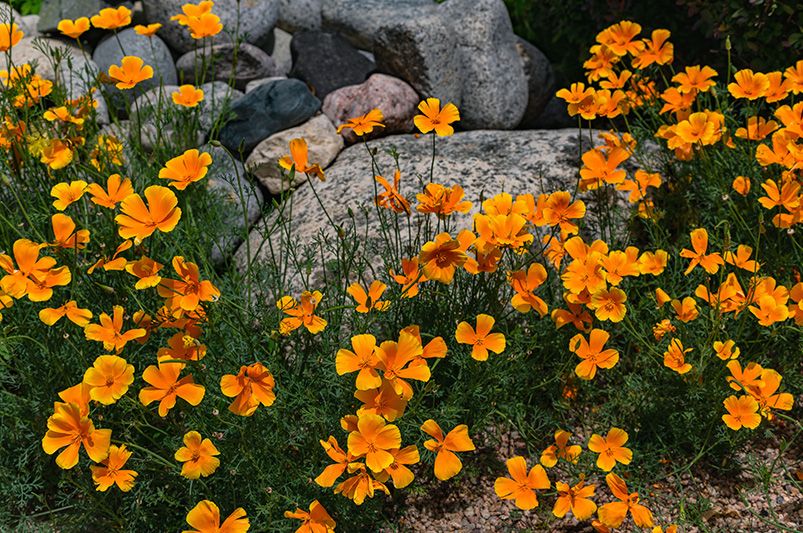
Key Highlights
- Discover eco-friendly alternatives to traditional lawn grass.
- Explore various no-grass front yard ideas, from xeriscaping to wildflower meadows.
- Learn how to maximize curb appeal with sustainable features like native plants and water-saving elements.
- Find out how to elevate your space with functional additions such as edible gardens and bee-friendly environments.
- Get inspired to transform your front yard into a stunning and sustainable oasis.
Introduction
Make your front yard look great and create an eco-friendly outdoor space with these no-grass ideas. Change your front yard landscape into a beautiful area that saves water, helps local wildlife, and needs less care. This will boost your curb appeal and benefit the environment.


Innovative No-Grass Front Yard Ideas
The days are gone when a green lawn was the only choice for front yards. Now, homeowners are choosing eco-friendly options that look good and help the environment.
You can mix different textures, colors, and heights to make an inviting space. It does not matter if you like a modern, simple look or a cozy cottage style. There are many no-grass front yard ideas to spark your next landscaping project.
1. Embrace Xeriscaping for Water Efficiency
Xeriscaping is a gardening method that saves water. It uses plants that do not need much water and smart ways to water them. This is great for places with little water or for homeowners who want to help the environment.
Choose native plants or those that can live in dry areas because they need very little water once they grow. For a touch of beauty, think about adding a small, water-saving water feature as a nice centerpiece.
By following xeriscaping ideas, you can make a beautiful and eco-friendly front yard that does well in dry situations.
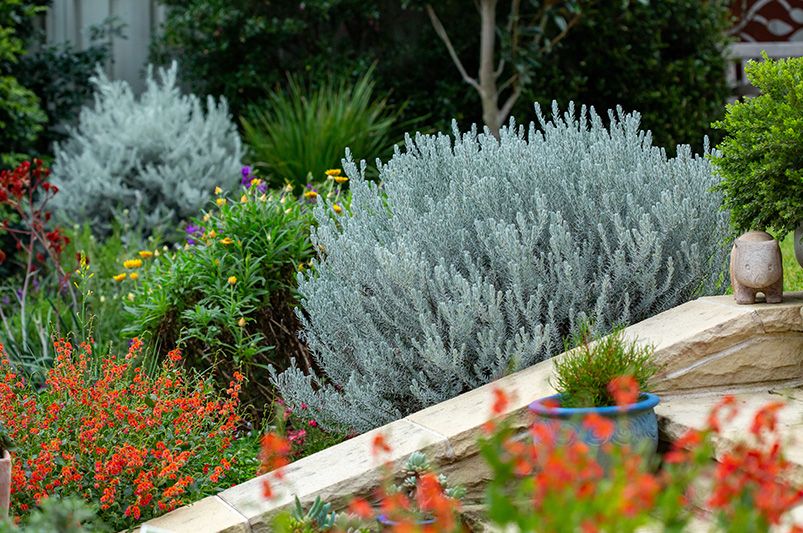
2. Integrate Native Plant Gardens
Create a vibrant ecosystem in your front yard by planting native plant gardens. Pick different native plants that fit your local climate and soil conditions. These plants are made for your area's environment. They can handle local weather and need less water and care than non-native plants.
Place plants with similar water needs together to save on irrigation. Native gardens boost the variety of life around you and bring in helpful insects and pollinators.
By making a space for local plants and animals, you can have a lovely and sustainable front yard. This, in turn, helps improve the health of your ecosystem.
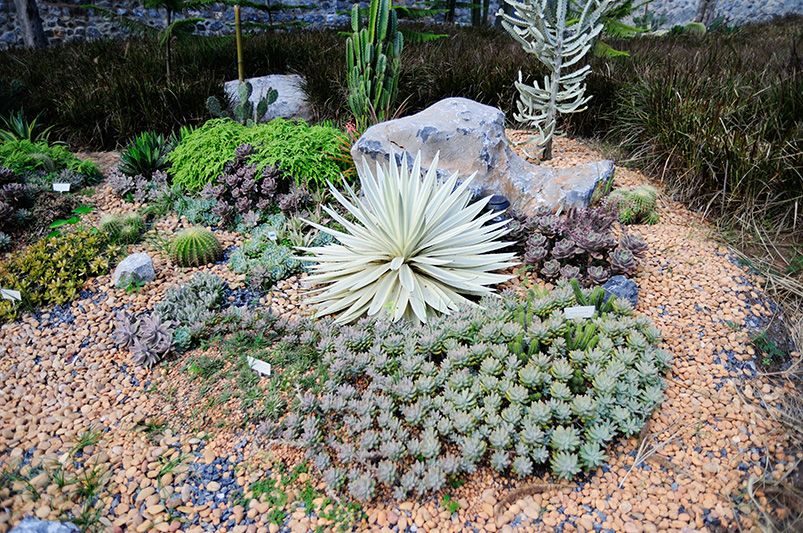
3. Design a Rock Garden with Succulents
For a front yard that needs little care and looks great, think about making a rock garden with succulents. This type of garden works well in sunny spots and soil that drains well.
Pick a range of succulents that have different colors, shapes, and textures to add visual interest. Mix them with decorative rocks, pebbles, or gravel to boost the aesthetic appeal.
Succulents are well-known for needing low water and can grow well in dry areas. This makes them great for water-wise gardening.
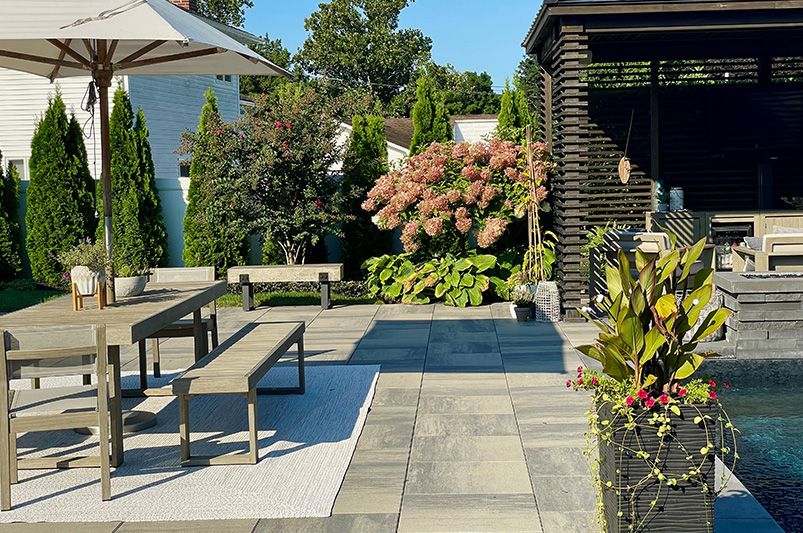
4. Create Outdoor Living Spaces with Pavers
Change your no-grass front yard into a part of your home by adding a cozy seating area with pavers. Use strong and nice-looking materials like natural stone, concrete, or brick to make paths or patios.
These paved spaces give a flat surface for outdoor furniture. This lets you relax and enjoy your front yard more. You can make the space feel warm and inviting by adding potted plants, outdoor lights, or a fire pit. With a smartly designed outdoor living space, your front yard can become a friendly place for relaxation and gatherings.
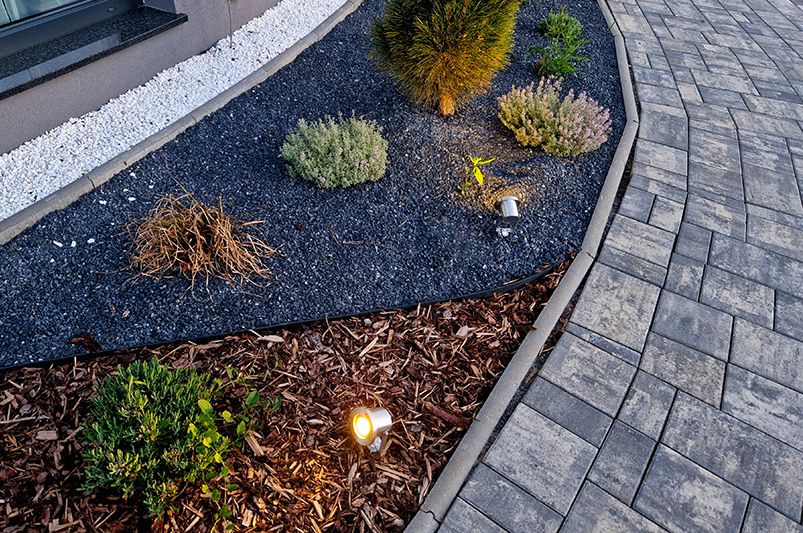
5. Utilize Mulch Beds for Easy Maintenance
Mulch beds are a great choice instead of regular lawn grass. They are easy to take care of and look good. You should apply a thick layer of organic mulch, like wood chips or bark. This will help stop weeds from growing, keep soil moist, and control soil temperature.
With mulch beds, you won't need to mow often. This cuts down on noise and helps the environment. Plus, as the organic materials break down over time, they improve soil health.
Pick a mulch color that matches your front yard design. You will enjoy a neat and eco-friendly landscape.
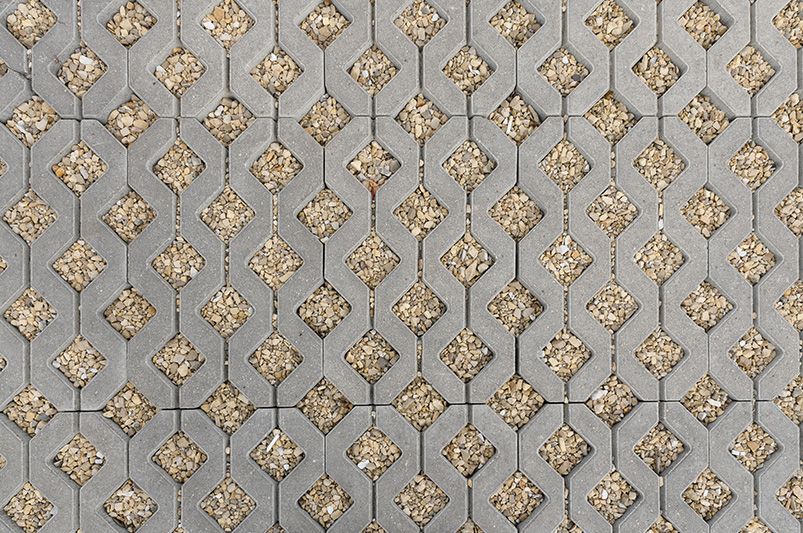
6. Install a Permeable Pathway
Make your front yard better for the environment by adding a permeable pathway. Unlike regular concrete or asphalt, these materials let water pass through. This helps to refill groundwater and lowers the chance of soil erosion.
You can use options like gravel, porous pavers, or stepping stones placed in gravel or mulch. These pathways help rainwater go into the ground. This cuts down on runoff that may carry pollution to storm drains and water bodies.
Permeable pathways help the environment and improve the visual interest of your front yard landscape.
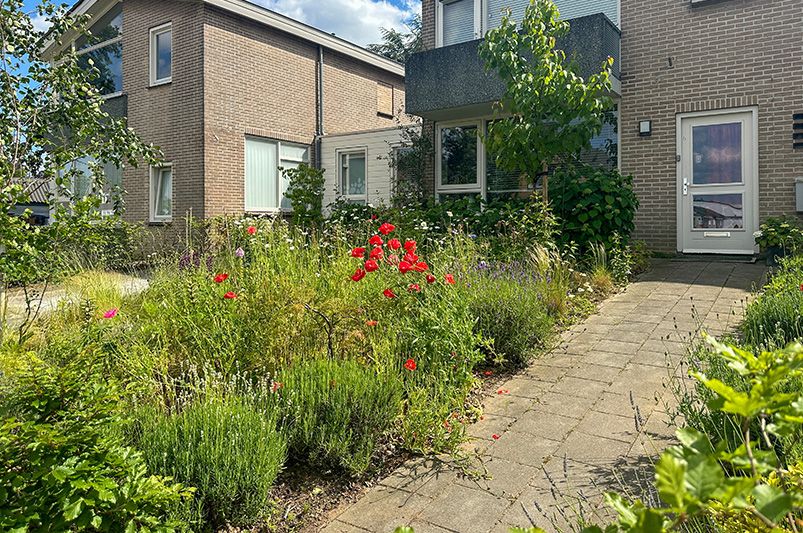
7. Plant a Wildflower Meadow
Create a lively and green front yard by planting a wildflower meadow. Pick a variety of native wildflowers that bloom at different times. This will give you a steady show of color all season long.
Wildflower meadows are great for pollinators like bees, butterflies, and hummingbirds. They provide important sources of nectar and pollen. To prepare the planting area, remove any grass or weeds and make sure the soil drains well.
After they grow, wildflower meadows need very little care. They are an easy and beautiful way to improve any front yard.
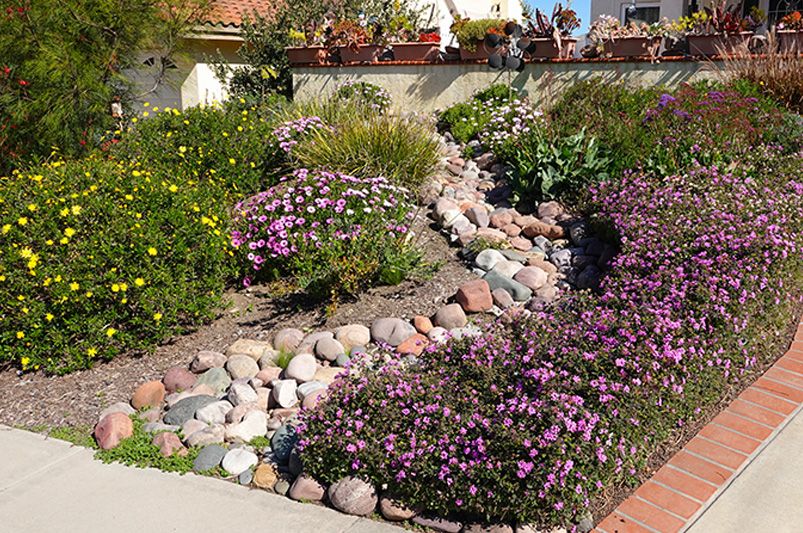
8. Set Up a Drought-Tolerant Landscape
In areas where there is little rain or water limits, it is important to create a drought-tolerant front yard. Choose a mix of native plants, succulents, and shrubs that can handle dry conditions.
These plants are built to live with less water, making them perfect for saving water in your garden. Put plants together that need similar amounts of water. This helps with irrigation and cuts down water waste.
If you follow drought-tolerant landscaping tips, you can build a strong and sustainable front yard that grows well even when it's dry.
Maximizing Curb Appeal with Sustainable Features
Sustainable landscaping can look great. You can use these design ideas to make your front yard not only beautiful but also eco-friendly.
When you mix smart design with good practices, you can improve your home's curb appeal. This also helps make the planet a better place.
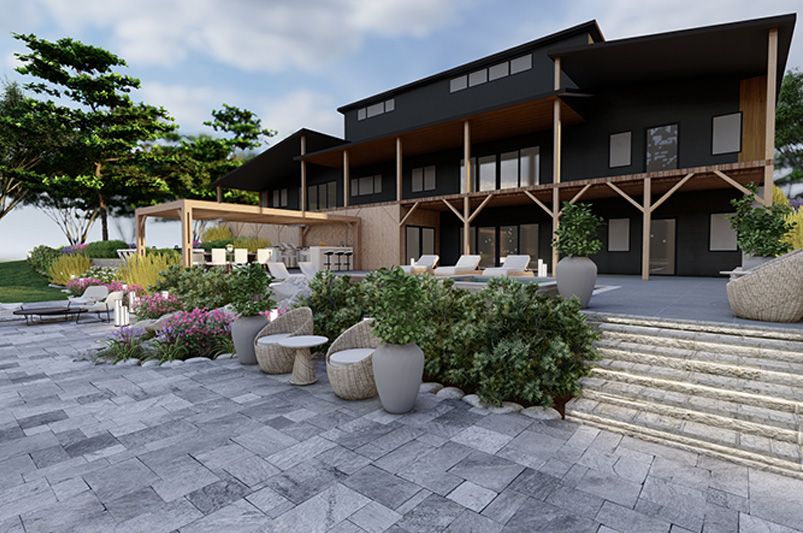
9. Incorporate Artistic Hardscaping Elements
Enhance the look of your front yard without grass by adding creative hardscaping features. You can use materials like natural stone, pavers, or gravel to create paths, retaining walls, or decorative edges.
Add focal points, like sculptures, water features, or special planters, to bring personality and excitement. The mix of hardscaping and soft landscaping gives your yard more visual interest and makes it look better overall.
Pick materials that match the style of your home. This helps create a nice mix of textures and colors in your front yard.
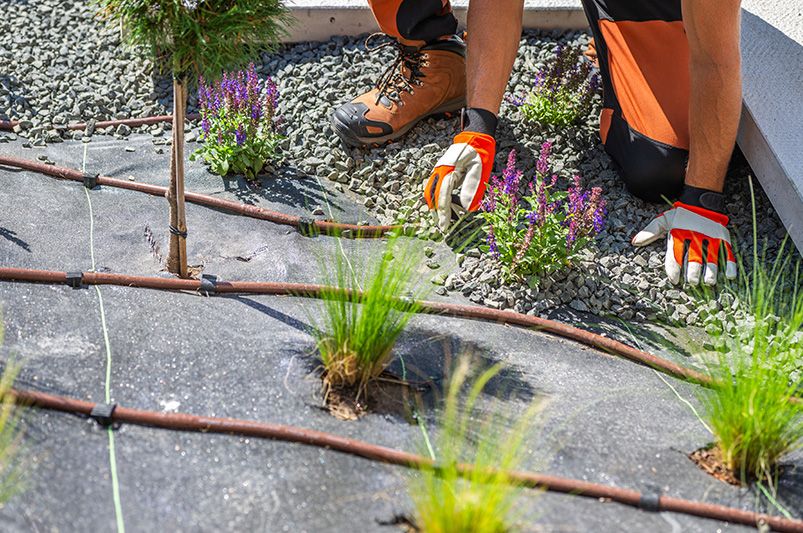
10. Add a Water-Saving Water Feature
Make your front yard calm and welcoming by adding a water feature that saves water. Look for designs that lower water loss, like fountains that recycle water or small ponds with plants.
Pick a spot for your water feature that has some shade to help keep the water from evaporating quickly. The soft sound of water makes a peaceful feeling, and the looks add elegance to your yard without grass.
With these smart water features, you can enjoy the beauty and calm of water while also being eco-friendly.
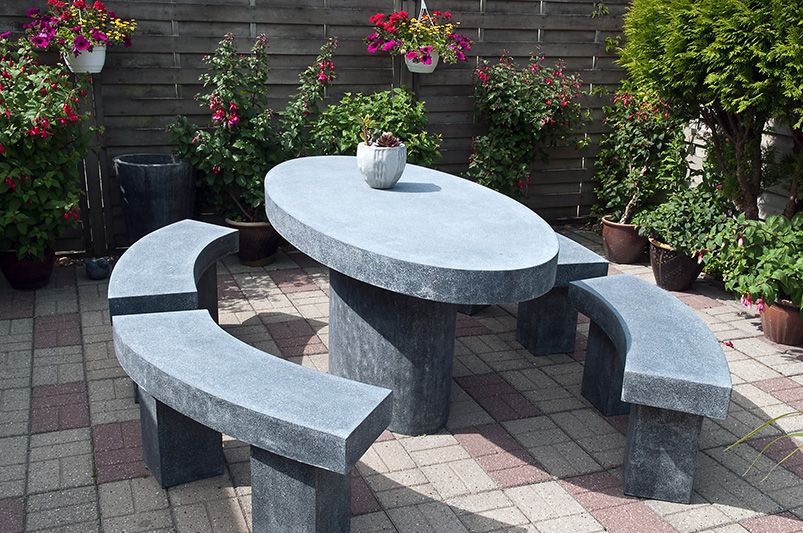
11. Construct a Front Yard Patio for Social Gatherings
You can make your living space bigger by adding a nice front yard patio that is great for social events. Use strong and good-looking materials like pavers, natural stone, or brick to make a flat and comfy area.
Include cozy seats, lights for the outdoors, and potted plants to make your patio feel warm and useful. Whether you have a small get-together or a big party, a well-planned patio turns your front yard into a perfect spot for having fun with guests.
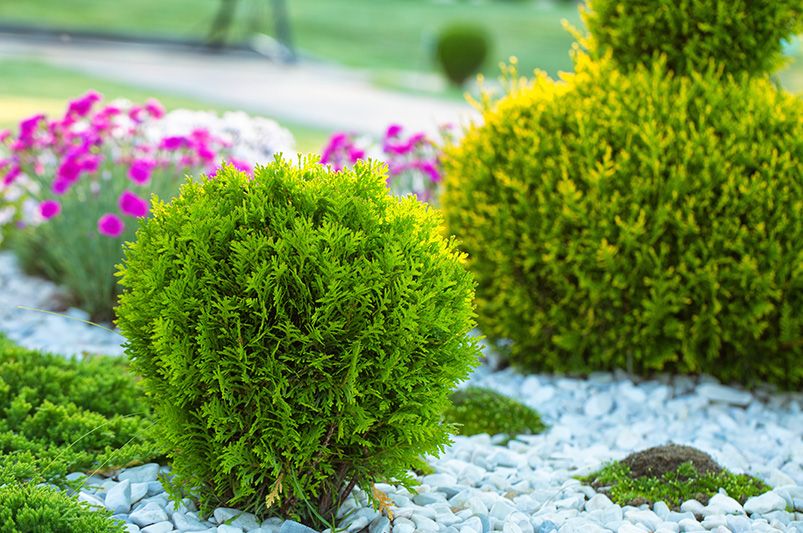
12. Use Decorative Grasses and Evergreens for Year-Round Interest
Create a lively and attractive front yard by using ornamental grasses and evergreen plants. These plants look good all year long. Grasses bring texture and motion, while evergreens give shape and color in winter.
Pick various grasses that differ in height, color, and flower shape. This will add depth and interest to your garden. Pair them with evergreen shrubs or small trees for extra structure and a layered look.
This mix will keep your front yard eye-catching all year. It will boost your home's curb appeal in every season.
Elevating Your Space with Functional Additions
Transform your no-grass front yard into a useful and sustainable area of your home with these smart and eco-friendly ideas.
By combining function and sustainability, you can upgrade your front yard into a space that improves your well-being and helps the environment.
13. Build Raised Beds for Edible Gardening
Combine your love for gardening with sustainable living by adding raised beds for growing food. You can make these beds with rot-resistant wood, stone, or concrete blocks.
Fill them with a quality soil mix. This will create the best conditions for your vegetables, herbs, or fruit plants. Raised beds have many benefits. They improve soil drainage. They also make it easier to care for your plants and give you a controlled growing space.
Just think about picking fresh produce right from your front yard. You will lower your carbon footprint and support healthy eating habits.
14. Introduce a Bee-Friendly Environment
Make your front yard a good place for helpful pollinators like bees. To do this, plant different kinds of flowers that bloom at various times. This gives bees a constant supply of nectar and pollen.
Pick a mix of native plants along with flowers that bees love, such as lavender, coneflowers, and sunflowers. Also, put a shallow dish with water and pebbles in your front yard, so bees have a place to drink.
By helping bee populations, you are making our ecosystem healthier. This also helps with the pollination of plants, which is key for a strong environment.
Conclusion
In summary, using sustainable ideas for your front yard can make your home look nicer and help the environment. There are many options, like xeriscaping and using native plants, which save water and need little care. Adding attractive hardscaping and features that save water can improve your curb appeal in a sustainable way. Think about putting in edible gardens and spaces that attract bees to make your outdoor space even better. Choose these green ideas to create a front yard that looks good, works well, and helps the planet, which can also add value to your property. Don't forget to share your journey toward a sustainable front yard on social media and inspire others to make a difference!
Frequently Asked Questions
How can I ensure my no-grass front yard is environmentally friendly?
Make water efficiency a priority by using native plants that can handle dry conditions. Use drip irrigation for better water delivery. Apply mulch to keep the soil moist. Pick organic fertilizers and pest control to reduce chemical runoff.
What are the best plants for a sustainable no-grass front yard?
Choose a variety of native plants that can handle drought, easy-to-care-for perennials, and flowering shrubs. Think about things like sunlight, soil type, and your local climate to pick the best options.
How do I maintain a no-grass yard with minimal effort?
Pick materials that are easy to take care of, like mulch, gravel, or artificial turf, for your ground cover. Select plants that grow slowly and can survive with little water. This way, you will not have to prune and water them often, which helps to reduce upkeep.
Can a no-grass front yard increase my property value?
A well-planned front yard landscape that does not require much care can really improve curb appeal. This can also raise the value of your property. Many homebuyers now want sustainable features as part of their search.
Making the Transition
Choosing the right landscape design is crucial for changing to a no-grass front yard. Make an inviting space by adding pathways that lead to your front door. This will highlight your new plants and hardscaping features.
Step-by-Step Guide to Transforming Your Front Yard
Begin by planning your garden design. Think about important features like a main path, planting spots, and a shady area for seating. Next, get the site ready. Remove the old grass, improve the soil, and add any DIY hardscaping features such as garden beds or pathways.
Need assistance designing a sustainable no-grass yard that enhances your home?
If you’re not sure where to start with your sustainable no-grass yard landscaping project, enlisting a professional can make a significant difference—and it doesn’t have to be costly. ShrubHub, a pioneer in remote landscape design, provides top-notch 3D landscape designs at budget-friendly rates. Our skilled team will walk you through every step, ensuring your outdoor space is both beautiful and tailored to your needs. Let ShrubHub transform your yard into a stunning, easy-to-maintain retreat!


